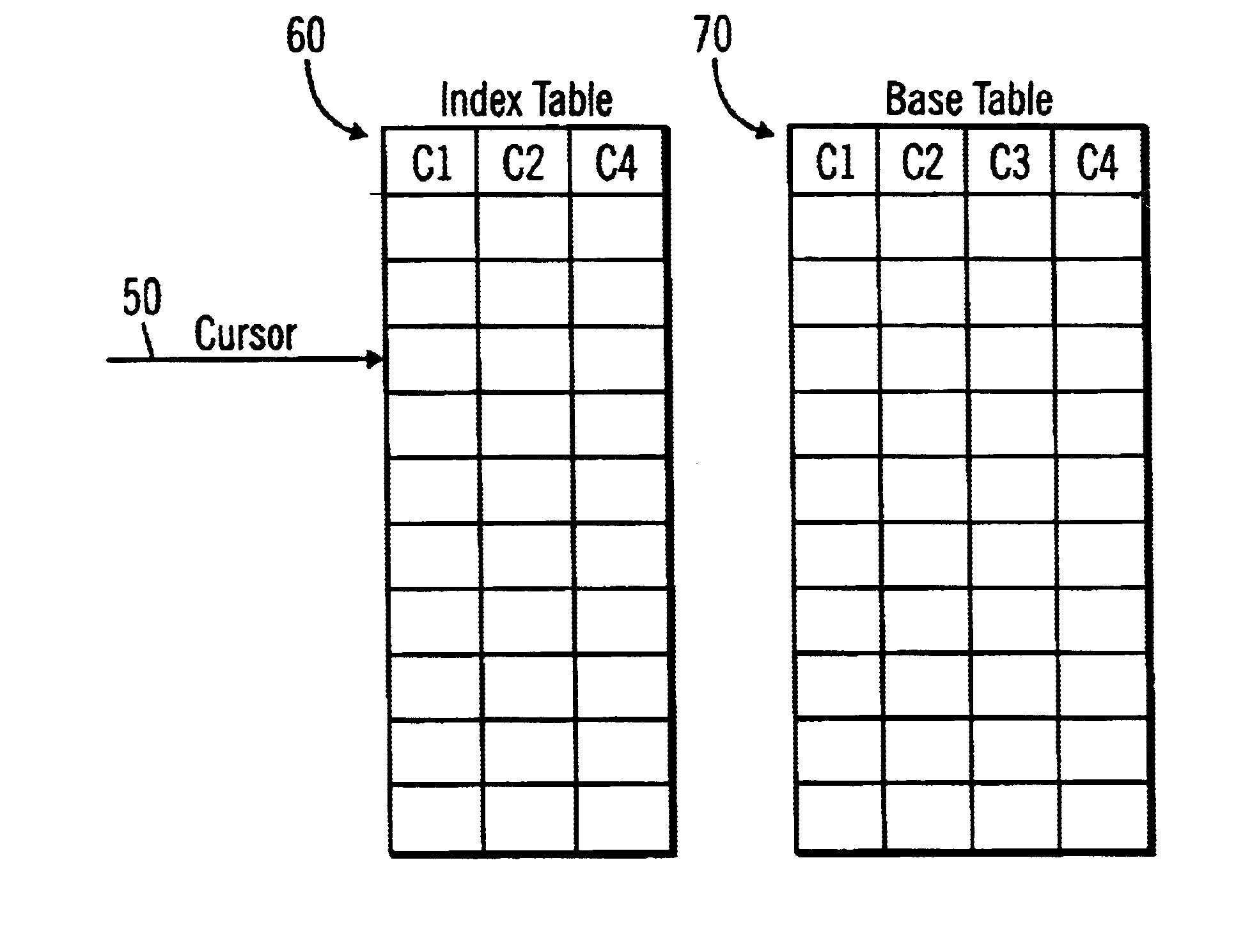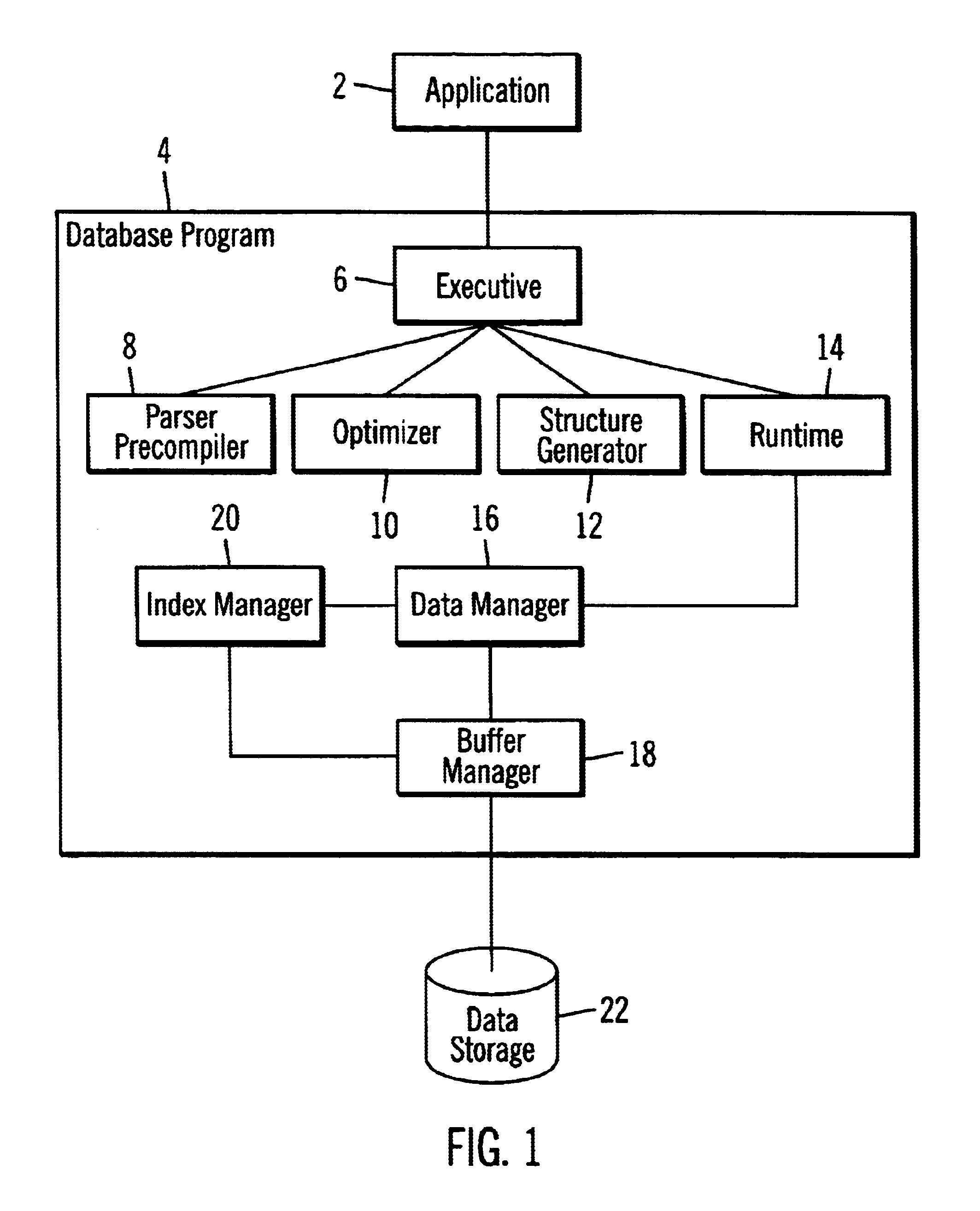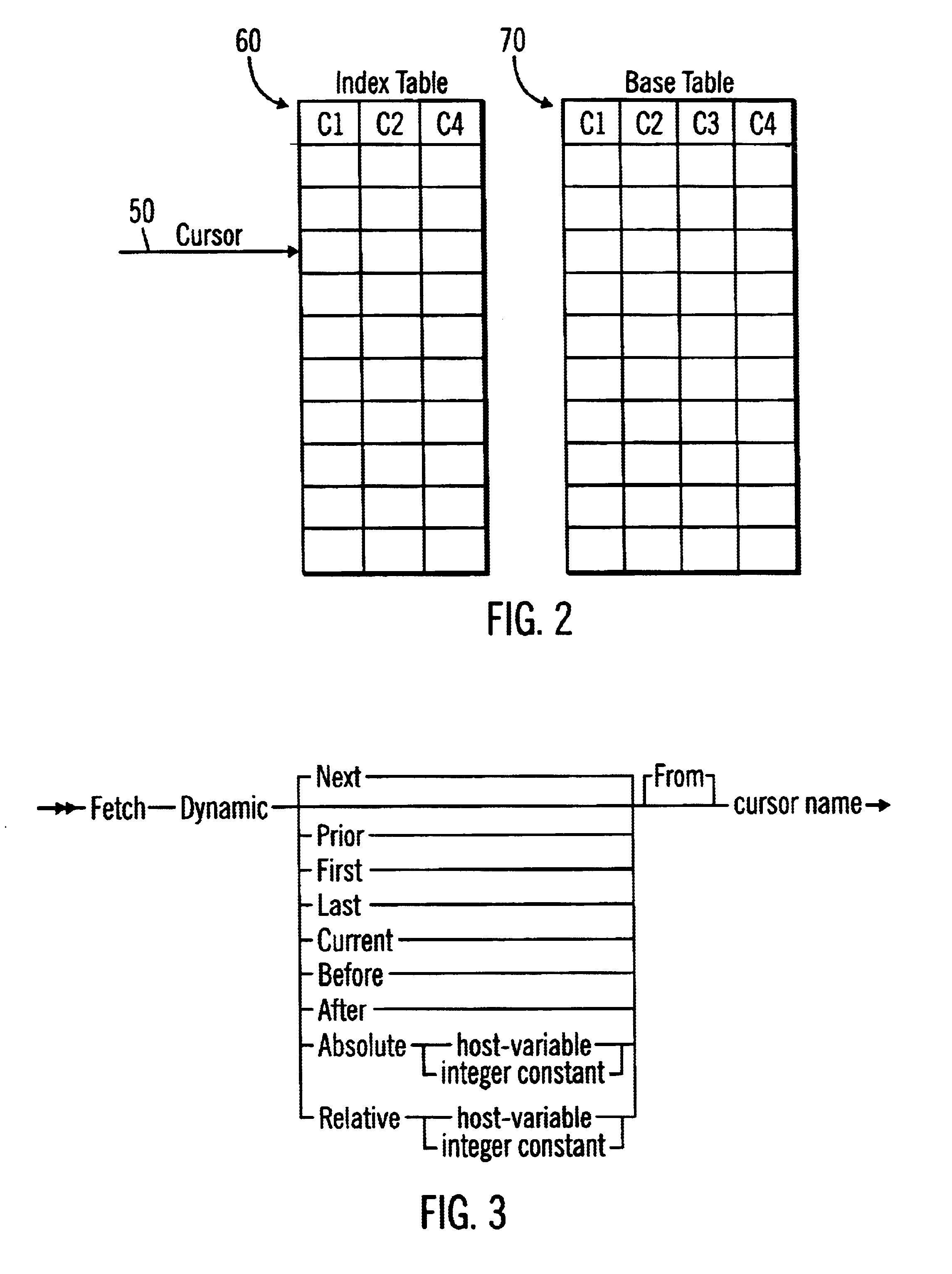Method, system and program for scrolling index scans
a scrolling index and scanning method technology, applied in the field of scrolling index scanning methods, systems and programs, can solve the problems of inefficiency of the process and the inability to move forward a large number of entries, and achieve the effect of minimizing the amount of traffic and minimizing the number of calls
- Summary
- Abstract
- Description
- Claims
- Application Information
AI Technical Summary
Benefits of technology
Problems solved by technology
Method used
Image
Examples
embodiments and conclusions
Alternative Embodiments and Conclusions
This concludes the description of the preferred embodiments of the invention. The following describes some alternative embodiments for accomplishing the present invention.
The preferred embodiments may be implemented as a method, apparatus or program using standard programming and / or engineering techniques to produce software, firmware, hardware, or any combination thereof. The programs and code defining the functions of the preferred embodiment can be delivered to a computer via a variety of information bearing media, which include, but are not limited to, computer-readable devices, firmware, programmable logic, memory devices (e.g., EEPROMs, ROMs, PROMs, RAMs, SRAMs, etc.) "floppy disk," CD-ROM, a file server providing access to the programs via a network transmission line, wireless transmission media, signals propagating through space, radio waves, infrared signals, etc. Still further the code in which the preferred embodiments are implemente...
PUM
 Login to View More
Login to View More Abstract
Description
Claims
Application Information
 Login to View More
Login to View More - R&D
- Intellectual Property
- Life Sciences
- Materials
- Tech Scout
- Unparalleled Data Quality
- Higher Quality Content
- 60% Fewer Hallucinations
Browse by: Latest US Patents, China's latest patents, Technical Efficacy Thesaurus, Application Domain, Technology Topic, Popular Technical Reports.
© 2025 PatSnap. All rights reserved.Legal|Privacy policy|Modern Slavery Act Transparency Statement|Sitemap|About US| Contact US: help@patsnap.com



